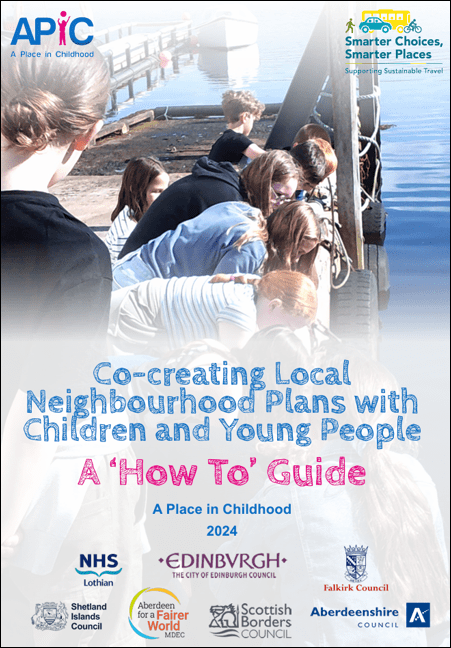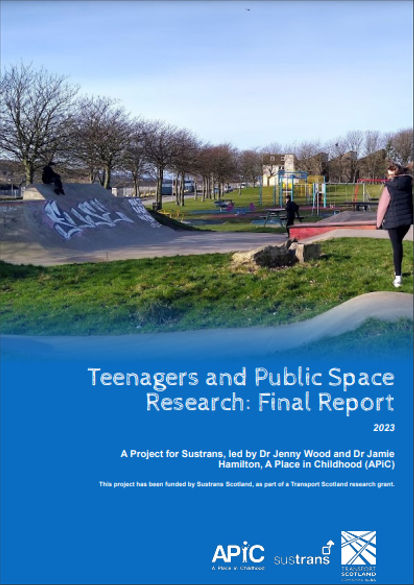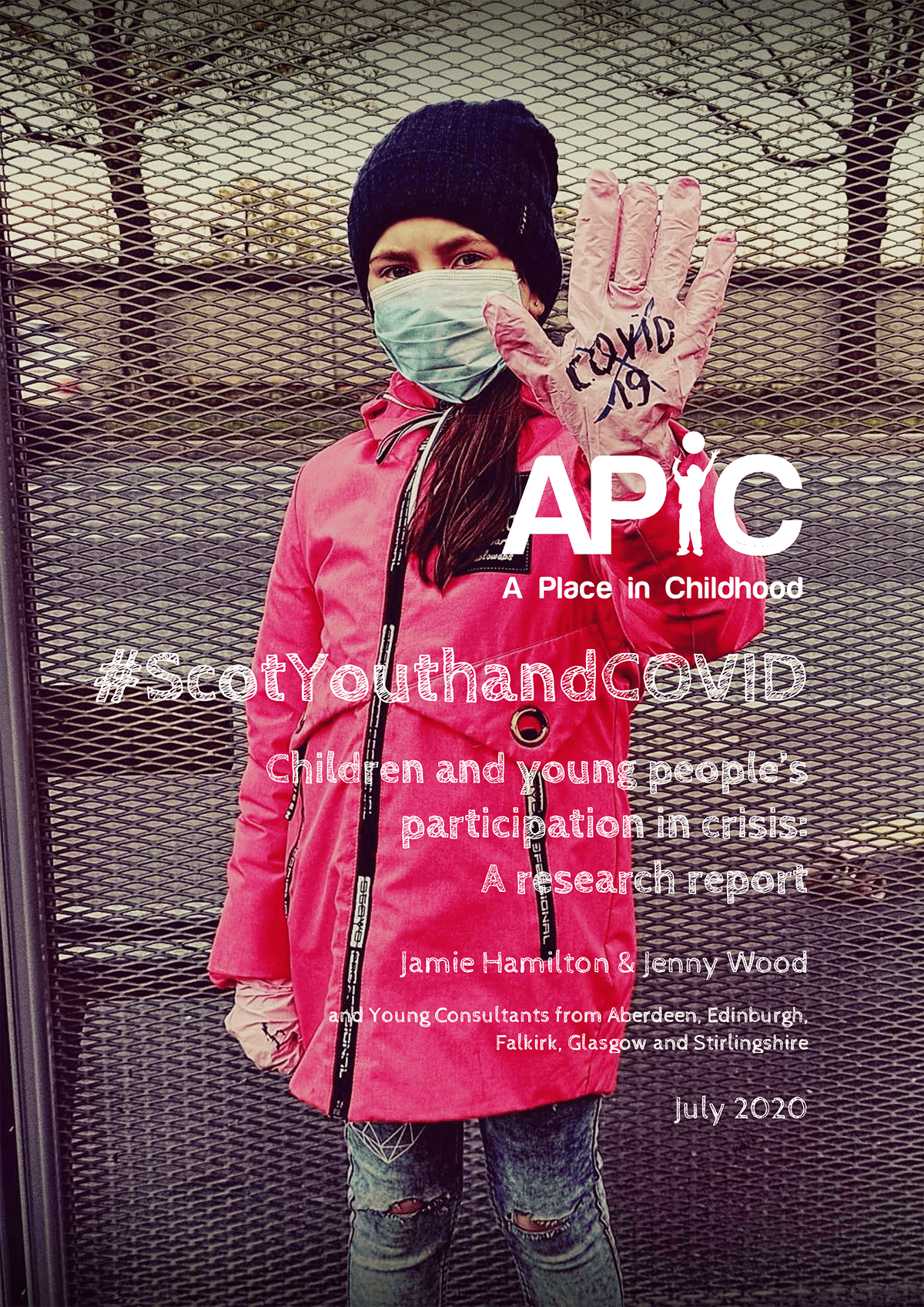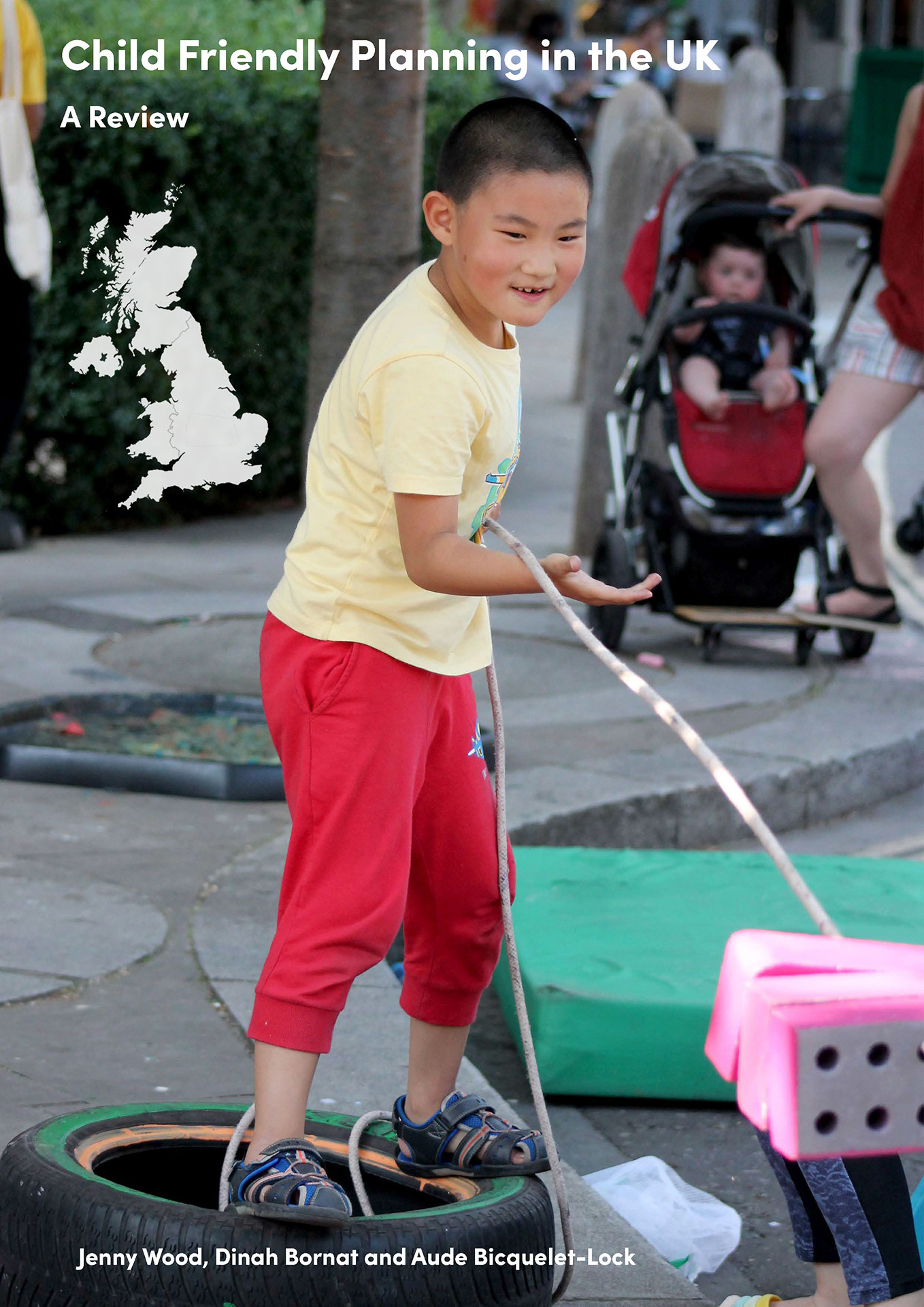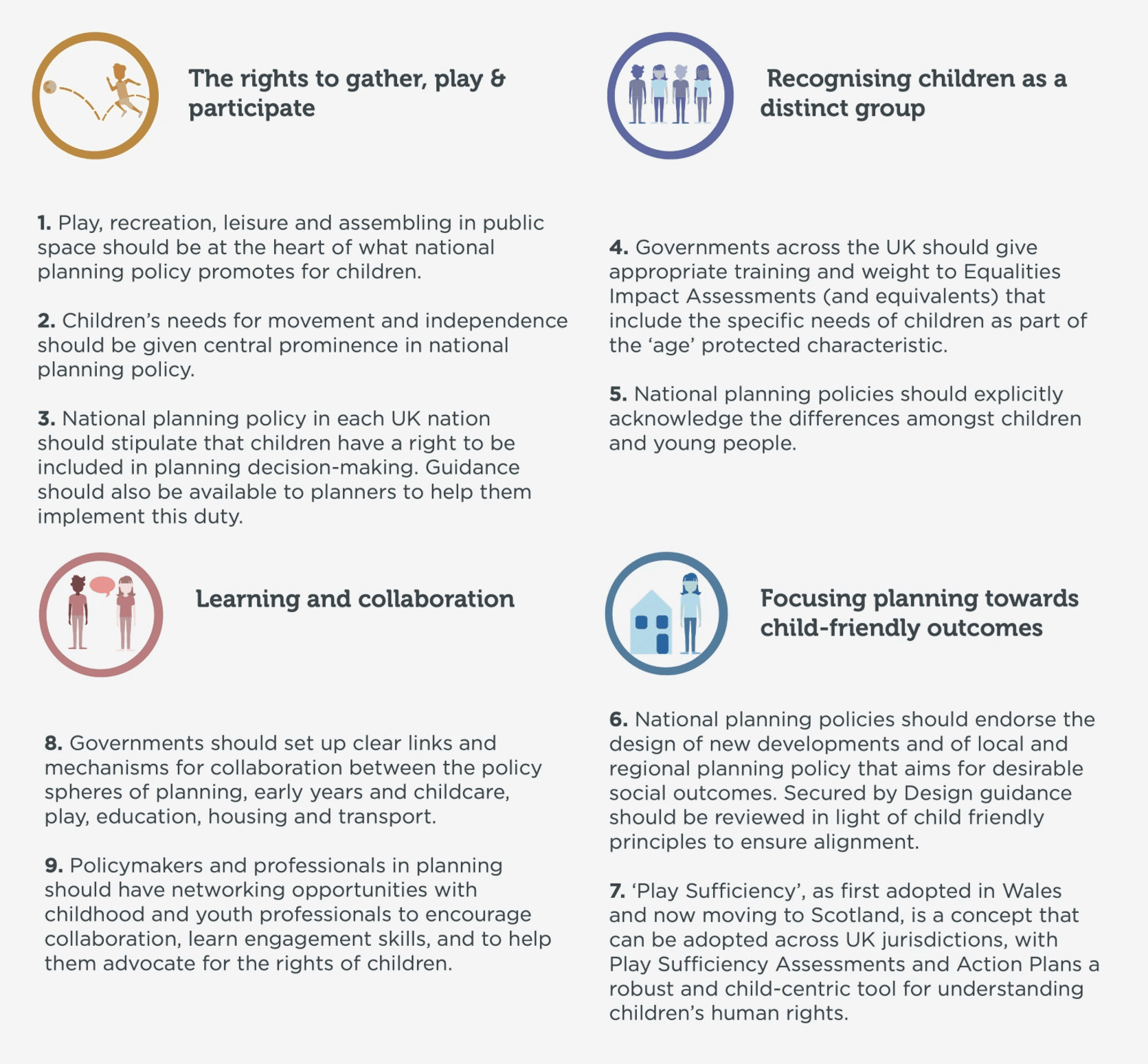Publications
Dig deeper into our projects by reading the publications authored by A Place in Childhood.
Co-creating Local Neighbourhood Plans with
Children and Young People
A ‘How To’ Guide
Authors: Guide written by Dr Jenny Wood, and Anna Gaffney, as an output of the Children and Teenager’s Neighbourhood Project.
Match-funded by Paths for All, Smarter Choices Smarter Places Programme, APiC, City of Edinburgh Council, NHS Lothian, Falkirk Council, Aberdeenshire Council, Aberdeen for a Fairer World, Scottish Borders Council, and Shetland Islands Council.
About this publication
This guide provides an overview of how to create neighbourhood or place plans with children and teenagers, to help integrate their views and ideas into broader decision-making frameworks relating to placemaking. The methodology outlined has been informed and refined through 5 years of APiC’s placemaking work with children and teenagers, and specifically honed through The Children and Teenager’s Neighbourhood Project.
The objective of these projects was to create children’s and teenagers’ maps of their local areas from their perspectives and work with them to identify local opportunities for improvement and
interventions that deliver cohesive places and reduce unsustainable travel. The plans created can now be used to inform decision-making across multiple departments which influence local placemaking.
This guide takes you through the process, including core and supplementary activities that lead to the co-creation of a cohesive plan. It also includes case studies for each stage, showing outputs from the project. It is intended for use by any anyone who seeks to integrate youth voice as part of their work in placemaking/community development.
“This guide takes you through the process we use at APiC to co-create thorough and fun local neighbourhood plans with children and young people. These provide a fantastic baseline for guiding decisions in line with children’s needs and interests, as well as showcasing their deep appreciation and connection with their local environments.
We hope this guide will be helpful in your next local planning or community action project. Please get in touch with any questions or support you might need”
Teenagers and Public Space Research
Authors: A report for Sustrans by Dr Jenny Wood and Dr Jamie Hamilton,
(APiC), with contributions from 146 young people and a wide range of local and national stakeholders in Falkirk, Edinburgh and Aberdeenshire.
About this publication
This research was conducted in three Scottish communities to understand the needs of teenagers regarding public spaces. The project focused on North Edinburgh, Huntly (Aberdeenshire), and the Denny and Bonnybridge area (Falkirk), which represent different urban and rural categories. The research was linked to the Sustrans Places for Everyone project, and the outcomes of the project informed both the research and the plans for infrastructure and placemaking interventions in these communities.
In each case study, we collaborated with groups of teenagers to create experiential maps that reflect their experiences and priorities. These maps formed the foundation of Local Strategy Workshops, where we facilitated dialogue between young people and local stakeholders. Young people and adults collectively discussed priorities, ideas, and ongoing or planned work. In North Edinburgh, we instead collaborated on a deeper engagement in collaboration with the City of Edinburgh Council, where local teenagers designed two new public spaces just outside their school.
Teenagers call for joined-up action on anti-social behaviour in their communities
The project culminated in a National Workshop where stakeholders from all case studies came together to discuss the broader picture of teenagers and public spaces across Scotland. In total, 146 young people aged 12 to 18 participated in the project, along with adult stakeholders from local and national public bodies, charities, and community groups.
The findings give rise to two route maps for improving things for teenagers to do, and ways to tackle anti-social behaviour at its root causes. These and the recommendations are highly relevant to anyone who works in placemaking, transport, and / or wants to improve our places for teenagers.
“We need to be trying to deter people from vandalising stuff by involving them more in the planning and upkeep of the places to encourages them to abuse them less. It will also like make them want to keep them nice and also be building skills for later in life.“
“If we want to successfully deliver inclusive and positive change in our public spaces, it’s absolutely vital that we engage and listen to all voices across our communities. Access to safe and welcoming public spaces is so important in allowing teenagers to connect with each other as well as helping them develop their sense of self. ”
Enabling Independent
Travel for Young Scots:
Age-appropriate Active Travel Infrastructure for 11-16 year olds
Authors: A report for Sustrans by Dr Jenny Wood and Dr Jamie Hamilton,
(APiC), with contributions from 31 Young Consultants and 14 of their Parents/carers.
About this publication
This research report details the active travel needs of children and young people aged 11 to 16 in Scotland. Through working with 31 Young Consultants and 14 of their parents/carers in 2020/21, in a Virtual Participatory Action Research Methodology, we present rich descriptions and Active Travel Maps of four Scottish communities.
These represent urban and rural scale settlements as well as differing levels of socio-economic status. The participating young people were all aged 11 to 16, with participants brought together for reflection and determining overall priorities.
Young People Rely on Active Travel for their Independence
The Active Travel Maps identify the barriers and opportunities experienced by young people when walking and cycling independently of an adult to important destinations in their localities. They also show the priorities for action in each area that would have the biggest positive impact on their motivation and confidence to active travel. We draw on these findings to present an overall picture of what age-appropriate active travel infrastructure looks like for children and young people in Scotland.
The core themes are:
▪ Providing adequate quantity and quality of places that children and young people really want to go and can access easily (motivating and accessible destinations);
▪ Ensuring there are safe, easy, and enjoyable routes to these motivating destinations;
▪ Building on the positive impacts of the COVID-19 pandemic in terms of motivating children and young people to undertake independent active travel;
▪ Encouraging families to become more familiar with active travel opportunities with their children;
▪ Ensuring adequate internet and mobile technology coverage in public space to increase the motivation and confidence of children and young people and their parents/carers to active travel.
We also explore the difference in terms of urban/rural differentiation, socioeconomic status of area, age of child or young person, and gender.
“As I started to get out, it was like so much better than just being like trapped in my back garden or in my house…the roads were free of traffic and I think lockdown really taught me a lot of stuff. Stuff I didn’t even know was there and places I could have been going to all the time that I didn’t even know about”
“Developing independence is an important part of growing up, and yet without opportunities for active travel young people are often dependent on parents or carers getting them from A to B by car. This participatory research project shows that young people are very good at showing us what could be better in the places they live, but all too often their views are assumed or ignored.
The results of this research set a framework for how we can make positive interventions in infrastructure to get more young people walking, cycling and wheeling. While most research on this topic has so far focused on travel to school, this work covers any and all the places young people in our case studies wanted to access.”
#ScotYouthandCOVID2: Children and Young People’s Participation Through Crisis
About this publication
#ScotYouthandCOVID2 was wave 2 of a Virtual Participatory Action Research Project with 25 Young Consultants across Scotland. The project was supported by The Children and Young People’s Commissioner Scotland.
‘Help us feel young again’, children and teens tell the Scottish Government
The project culminated in 34 Asks to the Scottish Government which revolve around the core themes of:
– Motivation and School
– Addressing Inequalities
– Skills and Employment
– Local Issues
– ‘Exam’ Years with High Workload and Stress
– Wellbeing
– Recovery
– Uncertainty
– Transition from Primary to Secondary School
– Tackling Climate Change
Understanding these experiences and insights is vital to ensure we collectively respect, protect and fulfil children’s rights during and beyond the COVID-19 pandemic.
Impact
The project was reported as an exclusive in The Herald, appeared in two articles in The Scotsman, made the front page of The Metro in Scotland, and also made local and regional press. Young Consultant Aimee even wrote a first person piece for The Scottish Sun about their experiences and what needs to happen next for young people.
BBC Radio Scotland interviewed Young Consultant Catriona, alongside Bruce Adamson, on The Good Morning Scotland show upon report release. Our Dr Jenny Wood also featured on the Summer Mornings call-in to discuss children and young people’s experiences of the pandemic.
The next step for this project is to engage more widely with children and young people across Scotland to develop a Children and Young People’s Manifesto for Change.
We hope that you and/or any organisations you work with, or for, may be open to helping and empowering the Young Consultants to take their strategy and aspirations forward.
Our ask to you is that you join them in progressing rights for children and young people across Scotland as they emerge from the COVID-19 pandemic. If you want to get involved, please email jenny.wood@aplaceinchildhood.org.
“I’d like to see more children getting their points across and being heard by the Scottish Government, and around the world children should be more heard. It’s like you shouldn’t be an adult to get your point across, you can be a child and get your point across.”
“Children and young people have the right to have their opinions heard in all decisions affecting them, and that has not happened enough during this pandemic. To counter this, Young Consultants have created a hopeful, productive and positive set of Asks from sharing their experiences and we must listen to them and children and young people across Scotland.”
#ScotYouthandCOVID: Children and Young People’s Participation in Crisis
About this publication
In May 2020, APiC initiated and funded this project on the basis that children and young people have a UN-sanctioned right to participate in the matters that affect them (Article 12 of the UN Convention on the Rights of the Child). This was especially important to uphold at a time when a range of other human rights had to be temporarily curtailed to slow the transmission of the Coronavirus.
25 young Scots from Aberdeen, Edinburgh, Falkirk, Glasgow and Stirlingshire formed groups of young consultants who led APiC through their experiences over the course of three youth-led online workshops, and devised a set of small changes that would make a big difference to their lives.
Impact
The project was reported in The Scotsman in June 2020, prior to the publication of this report. In Autumn 2020, the report was used by University of Birmingham as a valuable teaching resource for their Geography students:
Child-Friendly Planning in the UK: A Review
About this publication
Impact
The report has already featured as a key document in a policy by the Mayor of London to improve children’s independent mobility across the city; been cited in a review of evidence to inform integrated impact assessments for the Planning (Scotland) Act 2019; included in a presentation by RTPI at the 2020 World Urban Forum; and the lead author has been invited to speak at events to explore the reports’ findings on five separate occasions. Indeed, it has been cited in an academic journal article from New Zealand assessing and mapping the literature on child involvement in healthy placemaking.
We continue to see impacts emerging, and the findings have been guiding our policy advocacy work. For instance, the review’s recommendations formed the basis of APiC’s ‘Call for Ideas’ response to the Scottish Government on the development of the National Planning Framework 4.

